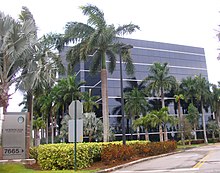 Norwegian Cruise Line (Nasdaq:NCLH) (Norwegian Cruise Line Holdings Ltd., NCL Corporation Ltd., “Norwegian” or “the Company”), today reported results for the quarter ended June 30, 2014, and provided guidance for the third quarter and full year 2014.
Norwegian Cruise Line (Nasdaq:NCLH) (Norwegian Cruise Line Holdings Ltd., NCL Corporation Ltd., “Norwegian” or “the Company”), today reported results for the quarter ended June 30, 2014, and provided guidance for the third quarter and full year 2014.
Second Quarter Highlights
- Adjusted EPS improvement to $0.58 from $0.29 in 2013
- Net Yield increase of 3.3%
- Revenue increase of 18.9% to $765.9 million
- Adjusted EBITDA increase of 44.0% to $219.4 million
Second Quarter Results
“This quarter marks the first full quarter with both Breakaway-class ships in operation,” said Kevin Sheehan, president and chief executive officer ofNorwegian Cruise Line. “Along with Norwegian Epic, these newer, premium, earnings-rich ships now comprise a little over a third of our capacity and contributed to the doubling of earnings in the quarter” continued Sheehan.
For the second quarter of 2014, the Company reported Adjusted EPS of $0.58, on Adjusted Net Income of $121.1 million, compared to $0.29 for the same period in 2013. On a GAAP basis, diluted earnings per share and net income were $0.54 and $111.6 million, respectively.
Net Revenue in the period increased 23.6% to $595.7 million driven by a 19.6% increase in Capacity Days and a 3.3% improvement in Net Yield (3.0% on a Constant Currency basis). The increase in Capacity Days was primarily from the addition of Norwegian Getaway and Norwegian Breakaway to the fleet in January 2014 and April 2013, respectively, and was partially offset by the planned dry-dock of Norwegian Jewel. The Net Yield improvement was due to higher Occupancy Percentage, higher onboard and other revenue and benefits from initiatives to reduce our cost of sales. Revenue for the period increased to $765.9 million from $644.4 million in 2013.
Adjusted Net Cruise Cost Excluding Fuel per Capacity Day decreased 2.3% (2.7% on a Constant Currency basis). The Company’s fuel price per metric ton, net of hedges, was $622 compared to $686 in 2013. Fuel consumption per Capacity Day in the quarter decreased 5.1%.
Interest expense, net was $31.9 million for the quarter. Interest expense, net in the same period in 2013 was $103.7 million which included $70.1 million of charges related to the refinancing of certain credit facilities and the redemption of certain of the Company’s senior unsecured notes. Excluding these charges, Adjusted Interest Expense, net was $33.6 million in 2013.
2014 Guidance and Sensitivities
In addition to the results for the second quarter, the Company also provided the following guidance for the third quarter and full year 2014, along with accompanying sensitivities.
“We are pleased to reiterate full year earnings guidance given the current promotional environment,” said Sheehan. “We are taking advantage of opportunities to strategically invest in initiatives to increase brand awareness and enhance the guest experience to drive long term returns.”
| (In thousands except per share data) | Third Quarter 2014 | Full Year 2014 | ||
| As Reported | Constant Currency |
As Reported | Constant Currency |
|
| Net Yield | 2.25 – 2.75% | 2.25 – 2.75% | 3.0 – 3.5% | 3.0 – 3.5% |
| Adjusted Net Cruise Cost | 2.0 – 3.0% | 2.0 – 3.0% | Flat to Slightly Up | Flat to Slightly Up |
| Excluding Fuel per Capacity Day (1) | ||||
| Adjusted EPS | $1.05 to $1.10 | $2.20 to $2.35 | ||
| Depreciation and amortization | $62 to $67 million | $250 to $255 million | ||
| Interest Expense, net | $32 to $36 million | $130 to $135 million | ||
| Effect on Adjusted EPS of a | $0.03 | $0.06 | ||
| 1% change in Net Yield (2) | ||||
| (1) Full year includes three Dry-docks | ||||
| (2) Based on midpoint of guidance | ||||
The following reflects the Company’s expectations regarding fuel consumption and pricing, along with accompanying sensitivities.
| Third Quarter 2014 | Full Year 2014 | |
| Fuel consumption in metric tons | 125,000 | 502,000 |
| Fuel price per metric ton, net of hedges | $650 | $635 |
| Effect on Adjusted EPS of a 10% change in fuel prices, net of hedges | $0.02 | $0.03 |
As of June 30, 2014, the Company had hedged approximately 76%, 59%, and 37% of its remaining 2014, 2015 and 2016 projected metric tons of fuel purchases, respectively.


